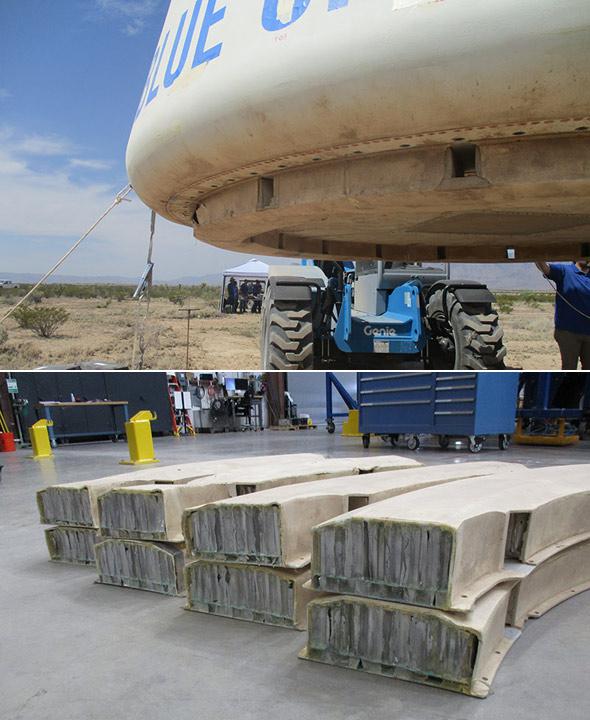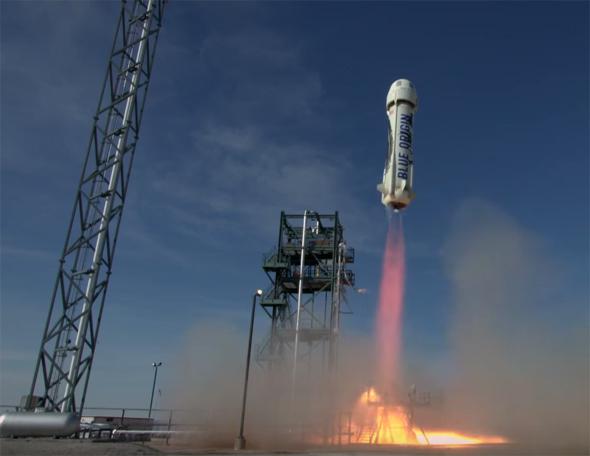Some good news from Blue Origin: Jeff Bezos, the CEO of the rocket company, reports that the last test flight, where one of the three crew capsule parachutes was intentionally undeployed, was a success.
This was the fourth flight of the company’s New Shepard rocket—literally, it’s the same rocket that had been launched and then landed vertically three times in the past. The rocket is suborbital, which means that it essentially goes straight up, deploys (ejects) the crew capsule, then lands back down vertically using its engine while the crew capsule comes back down via parachute. The whole flight lasts just a few minutes.
For this flight, which was on June 19, one of the main goals was to deploy the crew capsule with only two parachutes, to see if it can still land safely in the event of a single parachute failure. In an email sent out to a mailing list, Bezos reports that the capsule (which was uncrewed) descended at about 37 kilometers per hour using only the two ‘chutes before firing its retrorocket to slow its speed just before touching down. That “took out most of the velocity,” and then a crushable bumper ring absorbed the rest of it for a safe landing.
Blue Origin put together some pretty cool video of the flight:
At 1:50 you can see the rocket itself landing perfectly, right back on the launch pad. At 2:10 the crew capsule parachutes deploy, and then touchdown is at 2:53. I’ll note that when I watched this live on the web I didn’t see the retrorocket fire, and I was concerned the landing was too fast. Even in this video I don’t see it, but when I played the video at ¼ speed, I could see that the dust from the ground starts billowing just before the capsule actually makes contact, so clearly that’s from the retrorocket firing.
Blue Origin also released a couple of pictures of the crushable rings; one shows them under the capsule as its being hoisted up after landing, and the other shows the rings removed. As you can see, the rings were hardly compressed at all, showing that the landing wasn’t nearly as rough as you might expect with one parachute knocked out.

Blue Origin
This is all pretty good news. There’s a market for suborbital flights like these, both for tourists who want the thrill of falling from more than 100 km up and for scientific researchers interested in the effects of microgravity. Plus, this is also another step along the way for Blue Origin to launch orbital missions, which is far, far, more difficult but also more profitable and important in the long run.
SpaceX has been doing that for a few years now, but Blue Origin entering the arena is good for everyone as well. As long as price competition doesn’t compromise safety, the more private companies going into the space, the better it’ll be. SpaceX has shown space flight can be done for a fraction of what NASA can do it for otherwise, and I suspect Blue Origin will be able to as well. They’re working on their next generation orbit-capable engine and rocket, so the next few years should prove pretty interesting.
My congratulations again to Blue Origin! I do love seeing some of the science fiction I read as a kid becoming reality.
